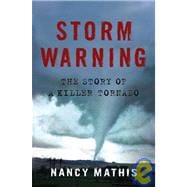May 3, 1999, is a day that Okla

May 3, 1999, is a day that Okla
| Introduction | |
| Nature's Atom Bomb | |
| A Meteorological Star | |
| A Tornado Forecast | |
| Searching For Clues | |
| The Tornado Detective | |
| Priority One | |
| Hiding From The Bear | |
| Inside The Bear's Cage | |
| Mr. Tornado Sees His First | |
| A Twister's Journey | |
| Vortex | |
| The Twister's Aftermath | |
| Seeing The Winds | |
| A Tornado's Grip | |
| Acknowledgments | |
| Notes | |
| Table of Contents provided by Publisher. All Rights Reserved. |
The New copy of this book will include any supplemental materials advertised. Please check the title of the book to determine if it should include any access cards, study guides, lab manuals, CDs, etc.
The Used, Rental and eBook copies of this book are not guaranteed to include any supplemental materials. Typically, only the book itself is included. This is true even if the title states it includes any access cards, study guides, lab manuals, CDs, etc.